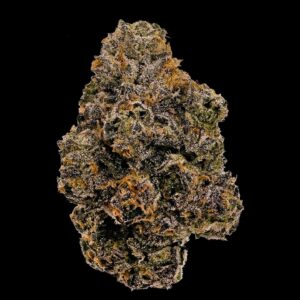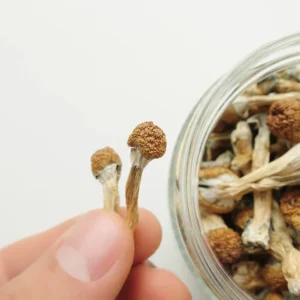What Is Hash?
Hash is a resin extract from the glands of cannabis plants. The glands are called trichomes and are found on the plant’s surface, and, the resin once extracted and processed, takes on a concentrated paste form. Hash has dark green or brown coloring and is typically sold in bricks or balls that contain the resinous substance.
The processes to make hash have been around for centuries, although a more recent ice water “bubble hash” method is being used widely. Unlike newer kinds of cannabinoids, hash production does not require solvents, although solvents are used to produce a variety of derivatives, such as popular hash oils and waxes. More contemporary forms of extraction processes can dramatically increase the strength of the substance. A single drop of hash oil has the same impact as one joint. No matter how hash is produced, it has powerful, mind-altering effects on people who use it.
How Does Weed Differ From Hash?
Marijuana, also commonly known as weed, ganja, pot, grass, and Mary Jane, is made from the dried parts of the Cannabis sativa plant — flowers, buds, and stems — not the resinous glands like hashish. It has a greenish-gray color and a dry, loose texture and is not the stickier composite form of hash. Resin is still present in the dried pieces of the plant but does not require the same extraction methods.
Most often, when people refer to marijuana or weed, they mean the flowers or buds of cannabis, not hash. Even so, people tend to lump the common names of these substances together, making it difficult to differentiate which is being discussed. Part of the confusion may stem from the original Arabic word “hashish,” which when translated means “grass.” It is essential to make the delineation between hashish and weed, though, because hash provides a different type of high than weed and should never be used in the same amount.
What Is the History of Hash and Weed?
Hash has a long history dating back to ancient Egypt and is believed to be the earliest recorded concentrate from cannabis. The hash people know today has its roots in India when cannabis plants being harvested were rubbed together by hand to release a sticky sap that was rolled into a ball and put in religious temples. Its first early use as an ingested substance was after the introduction of tobacco to which the resin was added and smoked. As colonization occurred, this substance made its way throughout Europe, and, eventually, to the Americas.
The roots of weed arose from the continent of Asia, where the hemp plant had multiple purposes, including herbal medicines, clothing, and food. Weed came to America by way of the early colonists growing hemp for making materials and ropes. People often associate today’s use of hash and weed products with those of other cultures at other times. However, the original intent of cannabis production was not to create a high, whereas contemporary uses have exploded into this area of recreational and routine use.
How Are Hash and Weed Similar?
Both hash and weed are derived from the Cannabis sativa plant. Cannabis has over 400 chemical compounds, and an important one for recreational purposes is delta-9-tetrahydrocannabinol. The level of THC-9 in a cannabis product is responsible for how potent it is and the high it will cause.
Obviously, the higher the chemical makeup of THC, the greater chances for a mind-altering experience. Both hash and weed have THC-9, but hash has considerably more intense psychoactive effects because the extraction process specifically removes only the concentrated resin paste.
How Do the Uses of Hash and Weed Differ?
HASH
Hashish is frequently smoked, much like weed. Both types of cannabis can be consumed or ingested. Here are the primary ways hash is used:
- Smoked in a pipe or water pipe (bong)
- Rolled into a joint or blunt
- Dabbed (ingested marijuana concentrate)
- Used in teas or other consumables
When hash is smoked, it is frequently combined with tobacco because it is harder to burn on its own. Dabbing is becoming increasingly popular because the concentrates, such as hash oil, wax, or budder or shatter (hard resin), offer high quantities, sometimes dangerously so, of THC to the user.
WEED
The market for cannabis products continues to grow. Interestingly, while there is considerable demand for non-THC products used mainly for medicinal purposes, the desire for products with higher levels of THC is equally robust. In a 2020 survey that identified 49.6 million people who used cannabis within the previous 12 months, 5.1% (14.2 million) of those persons reported having a cannabis use disorder. These are the primary ways weed is used:
- Pipes or bongs
- Joints or blunts
- Vaporizers
- Edibles (gummies, brownies, candies, and cookies)
As more states adopt laws legalizing marijuana use, it appears this consumption trend will remain on a worrying upward trajectory. It is important to understand that while smoking or consuming weed can deliver reasonably high levels of THC, using hashish is still more concerning when it comes to detrimental health issues.
How Is Hash Potency Different From Weed?
The powerful effects of hash on the brain’s chemical processes are why the drug is highly sought by the medical community for treatment purposes and casual users who want an intense experience. Under medical direction, the effects can be regulated for desired outcomes. With regard to recreational use, frequency, amount, product strength, and personal tolerance are important contributors to an individual’s relative safety.
While hash and weed both contain THC-9, the concentrations in hash leave individuals much more vulnerable to serious reactions when hash is consumed inappropriately. However, even when people responsibly use hashish, they may still experience severe reactions. A new synthetic derivative, tetrahydrocannabinloic acid, is sold in state-licensed retail shops and boasts the highest amount of THC found in hash products. It is also sold in illicit markets, and the possibility of serious harm from overdose is great.
Weed has varying degrees of potency but is not strong as the resin paste that produces hash bricks or hash oils. The THC level in weed has risen over the years with the advent of new types of consumables, but it remains less harmful than the physical effects of hash.








Reviews
There are no reviews yet.